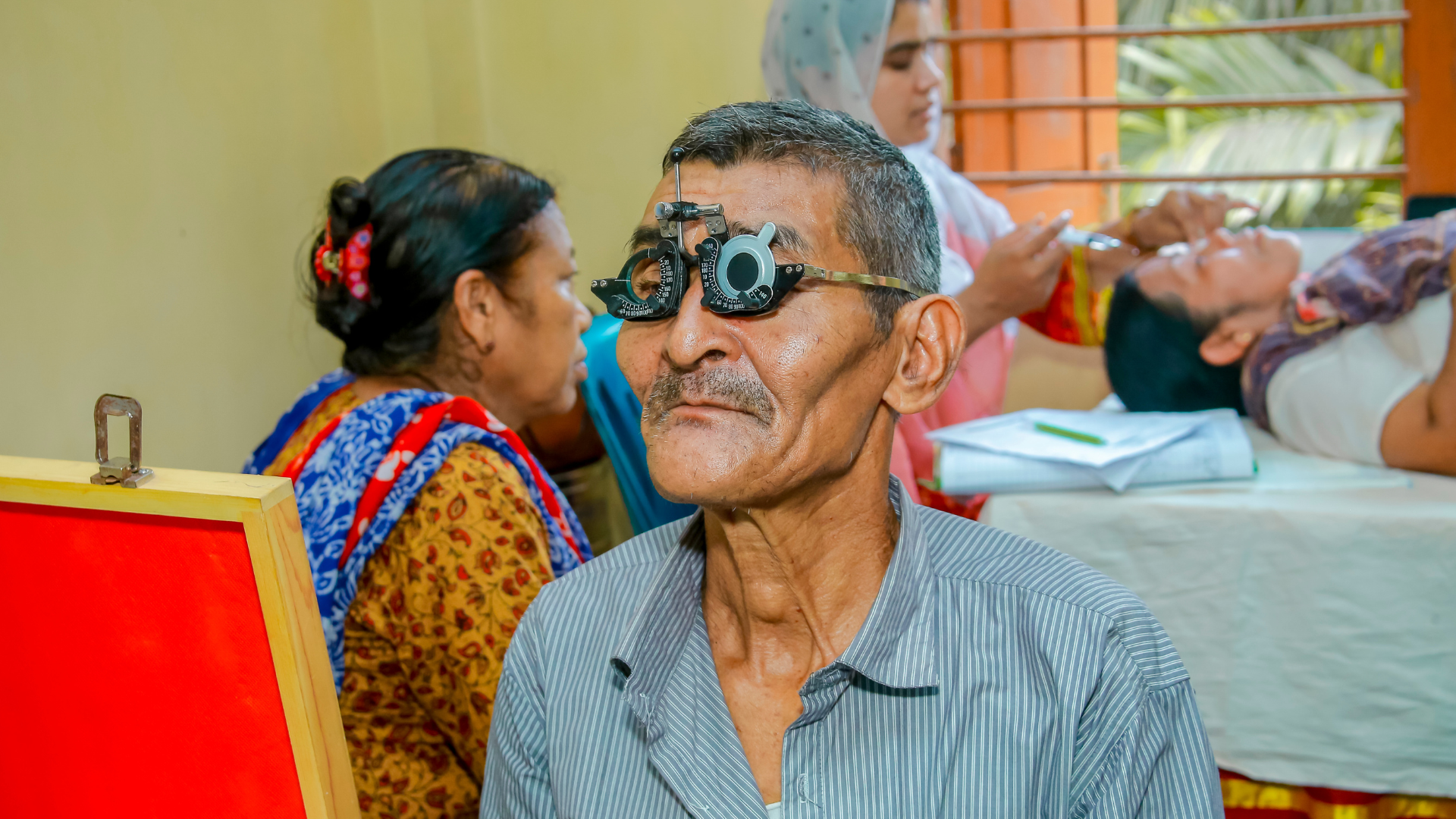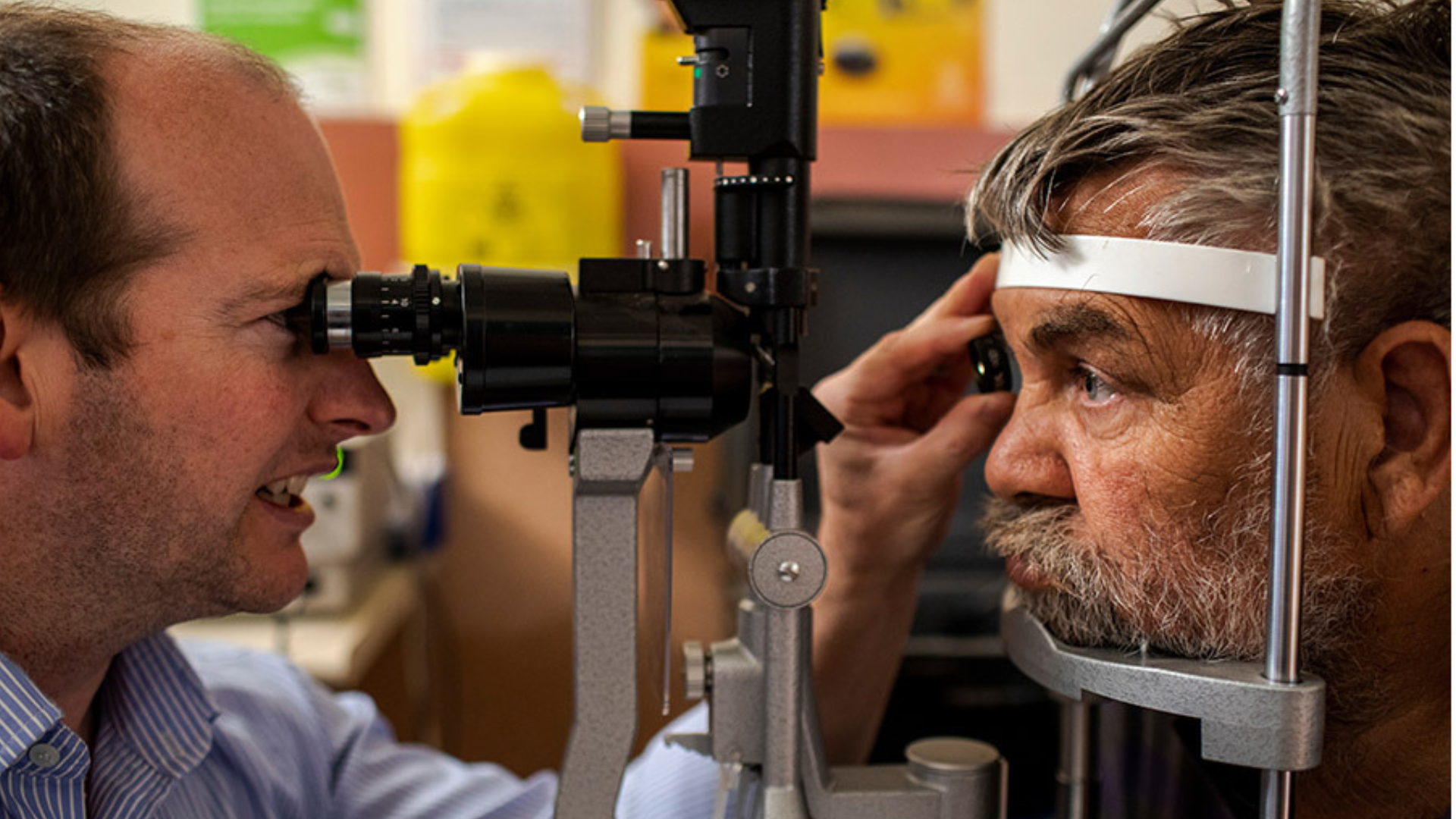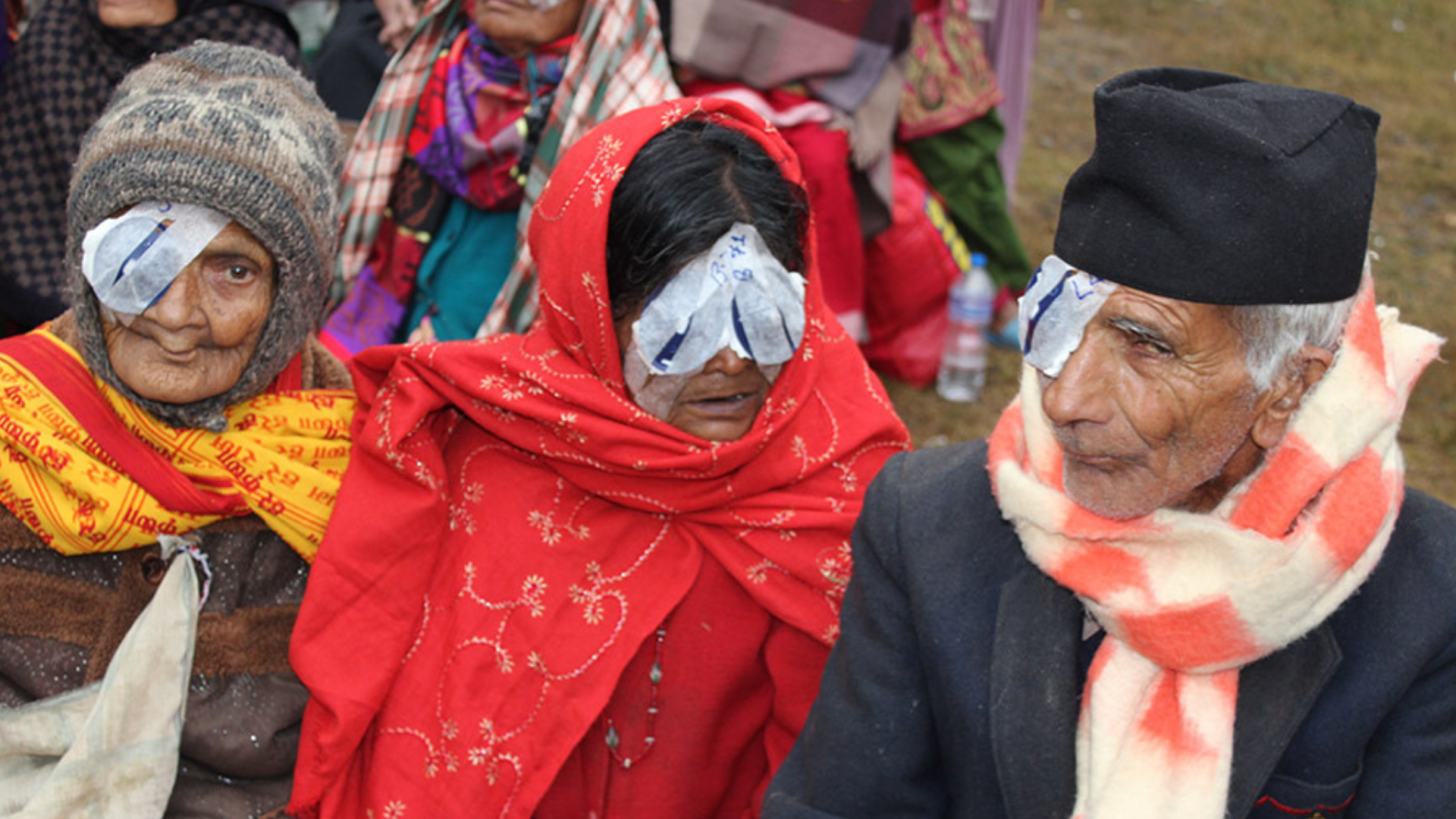Eye health
Why is my vision blurry?

If you have blurry, blurred, cloudy or hazy vision, then you will not be able to see things clearly or in detail. It is possible to experience blurry vision in both eyes or just in one eye. It is also possible for just parts of your vision to be blurry or your entire field of vision. Both these things depend on the cause of your blurry vision.
In a hurry?
Go to the frequently asked question about blurry vision you’re most interested in learning the answer to:
- What are some common causes of blurry vision?
- Is blurry vision a cause for concern?
- Should blurry vision be checked by a doctor?
- Do you need immediate medical aid if you experience blurry vision?
- Is blurry vision common during a stroke?
- Why can retinal detachment cause blurry vision?
- How quickly will your vision go blurry during retinal detachment?
- Can a brain tumour cause blurry vision?
- Can angle-closure glaucoma cause blurry vision?
- What is macular degeneration and how does it cause blurry vision?
1. What are some common causes of blurry vision?
There are many causes of blurry vision in one eye. Here are some (in no particular order):
- Corneal abrasion (trauma to the eye)
- Refractive errors (myopia, hyperopia, presbyopia, astigmatism)
- Retinal detachment
- Diabetic retinopathy
- Aged-related macular degeneration
- Cataract
- Migraine
- Stroke
- Inflammation of the eye
- Inflammation of the optic nerve
- Temporal arteritis (blood vessel inflammation)
- Eye infections
- Certain medications
- Glaucoma
- Injury/trauma to the eye
3. Should blurry vision be checked by a doctor?
If you experience any changes in your vision, including blurry vision, you should visit your regular eye health practitioner as soon as possible – be it your optometrist or ophthalmologist. Sudden loss of vision should be investigated immediately.

Photographer: Hanh Tran
Seek immediate medical attention if the blurriness comes on suddenly. Other symptoms may include double vision, tunnel vision, blind spots, halos, flashing lights, floaters, and dimness of vision as well as headaches.
5. Is blurry vision common during a stroke?
If a person is experiencing a stroke that impacts the visual pathway, they will experience visual symptoms such as blurry vision. A stroke can lead to loss of an area of vision, also known as visual field loss or partial loss of vision.
A stroke happens when a part of the brain is deprived of blood. This can also happen to the blood supplying the nerves of the eye resulting in an ‘eye stroke’. If a person experiences a stroke that impacts the visual pathway, they will encounter visual symptoms such as blurry vision.
Depending on the location of the stroke in relation to the visual pathway, different areas of loss of vision will be experienced. The vision loss could affect one or both eyes.
The nerves from each eye cross over and divide to travel together on both sides of the brain behind the crossover point. Hence, any injury/stroke after the crossover point will affect the vision in both eyes. Because of this crossover, the opposite side of vision to the stroke will be experienced, for instance, if the right side of your brain is impacted by a stroke, the left side vision in each eye may be affected.
Blurry vision related to stroke can happen suddenly or be preceded by episodes of temporary loss of vision. Temporary loss of vision or transient ischaemic attacks where the blood supply to your brain is blocked temporarily, can be a sign of an impending stroke. You should seek medical attention immediately if you experience this.
A stroke happens when a part of the brain is deprived of blood. This can also happen to the blood supplying the nerves of the eye resulting in an ‘eye stroke’. If a person experiences a stroke that impacts the visual pathway, they will encounter visual symptoms such as blurry vision.
Depending on the location of the stroke in relation to the visual pathway, different areas of loss of vision will be experienced. The vision loss could affect one or both eyes.
The nerves from each eye cross over and divide to travel together on both sides of the brain behind the crossover point. Hence, any injury/stroke after the crossover point will affect the vision in both eyes. Because of this crossover, the opposite side of vision to the stroke will be experienced, for instance, if the right side of your brain is impacted by a stroke, the left side vision in each eye may be affected.
Blurry vision related to stroke can happen suddenly or be preceded by episodes of temporary loss of vision. Temporary loss of vision or transient ischaemic attacks where the blood supply to your brain is blocked temporarily, can be a sign of an impending stroke. You should seek medical attention immediately if you experience this.
6. Why can retinal detachment cause blurry vision?
The purpose of the retina is to send visual images to the brain through the optic nerve, but when it becomes detached, blurry vision results. Retinal detachment is a serious medical emergency. Retinal detachment has to be treated quickly to prevent permanent vision loss, which can occur within a few hours or days.
The retina is a critical and fragile layer of nerve tissue at the back of the eye. It can become detached from the underlying layer of blood vessels it depends on for oxygen and nutrients.
Signs of retinal detachment include flashes (a brief flash, lightning-like streaks or a sparkle) and floaters (spots, specks and lines that float around) in your vision. Holes or small tears can occur in the retina which can be treated to prevent retinal detachment. Regular eye examinations can pick these up if you are at risk.
Age-related shrinkage of the vitreous gel, which may lead to tearing at a weak point in the retina, is one of the most common causes of retinal detachment. Blunt force trauma to the eye, for instance being hit in the eye, is another common cause. High levels of myopia or short-sightedness also increase the risk of getting a retinal detachment.
The retina is a critical and fragile layer of nerve tissue at the back of the eye. It can become detached from the underlying layer of blood vessels it depends on for oxygen and nutrients.
Signs of retinal detachment include flashes (a brief flash, lightning-like streaks or a sparkle) and floaters (spots, specks and lines that float around) in your vision. Holes or small tears can occur in the retina which can be treated to prevent retinal detachment. Regular eye examinations can pick these up if you are at risk.
Age-related shrinkage of the vitreous gel, which may lead to tearing at a weak point in the retina, is one of the most common causes of retinal detachment. Blunt force trauma to the eye, for instance being hit in the eye, is another common cause. High levels of myopia or short-sightedness also increase the risk of getting a retinal detachment.

Photographer: Michael Amendolia
7. How quickly will your vision go blurry during retinal detachment?
Depending on which part of the retina is detached, you may not notice blurred vision but instead see floaters or flashing lights. Any sudden appearance of floaters and flashing lights should be investigated as soon as possible.
Occasionally, retinal detachment can occur without warning. The first sign of detachment may be a shadow across part of your vision that does not go away.
Retinal detachment can occur more commonly in people who have near/short-sightedness (myopia), and diabetes (advanced diabetic retinopathy). Anyone with either of these conditions should see their eye health practitioners regularly for eye examinations.
Retinal tears or holes can be treated with laser surgery or by freezing (cryopexy). Retinal detachments are treated with surgery, where the retina is reattached to the eye by various means depending on severity. The options include gas or air injection, scleral buckle and vitrectomy, where the gel in the eye is removed and replaced with air, gas or silicone oil.
Occasionally, retinal detachment can occur without warning. The first sign of detachment may be a shadow across part of your vision that does not go away.
Retinal detachment can occur more commonly in people who have near/short-sightedness (myopia), and diabetes (advanced diabetic retinopathy). Anyone with either of these conditions should see their eye health practitioners regularly for eye examinations.
Retinal tears or holes can be treated with laser surgery or by freezing (cryopexy). Retinal detachments are treated with surgery, where the retina is reattached to the eye by various means depending on severity. The options include gas or air injection, scleral buckle and vitrectomy, where the gel in the eye is removed and replaced with air, gas or silicone oil.

Photographer: Sunita KC
8. Can a brain tumor cause blurry vision?
If a brain tumour impinges on the optic nerves or the visual pathways, then it can potentially cause blurry vision. Depending on location, tumours can result in blurry vision, double vision or an ever-growing blind spot or visual field loss. As the tumour grows, it may start to compress the optic nerve/visual pathways, resulting in greater vision loss and even blindness.
How quickly your vision goes blurry from a brain tumour depends on how close it is to the optic nerve/visual pathways it is and how fast it’s growing.
How quickly your vision goes blurry from a brain tumour depends on how close it is to the optic nerve/visual pathways it is and how fast it’s growing.
9. Can angle-closure glaucoma cause blurry vision?
Angle-closure or closed-angle glaucoma results from the iris bulging forward to narrow or block the drainage angle formed by the cornea and iris. This results in fluid not being able to circulate through the eye, causing pressure to increase.
An increase in the pressure in the eye can lead to damage in the optic nerve, which causes vision loss. If the pressure is very high, the cornea swells and becomes cloudy causing blurred vision.
Blurry vision and other symptoms can occur gradually or suddenly (acute angle-closure glaucoma).
Acute angle-closure glaucoma can present with symptoms including severe headaches, nausea, vomiting, eye pain, haloes, and blurred vision as well as redness in the eyes.
Chronic angle-closure glaucoma can be asymptomatic until it reaches advanced stages where vision is decreased or reduced peripheral vision (tunnel vision) is reported.
If you experience any of these symptoms, seek immediate attention. Your eye health specialist will provide you with your options, which will most likely involve surgery.
An increase in the pressure in the eye can lead to damage in the optic nerve, which causes vision loss. If the pressure is very high, the cornea swells and becomes cloudy causing blurred vision.
Blurry vision and other symptoms can occur gradually or suddenly (acute angle-closure glaucoma).
Acute angle-closure glaucoma can present with symptoms including severe headaches, nausea, vomiting, eye pain, haloes, and blurred vision as well as redness in the eyes.
Chronic angle-closure glaucoma can be asymptomatic until it reaches advanced stages where vision is decreased or reduced peripheral vision (tunnel vision) is reported.
If you experience any of these symptoms, seek immediate attention. Your eye health specialist will provide you with your options, which will most likely involve surgery.
10. What is Macular Degeneration and how does it cause blurry vision?
Macular degeneration causes a loss of vision at the central part of the eye. The macula is the part of the retina that is responsible for detailed central vision (clarity) and once the macular receptors deteriorate, details become blurry.
Dry macular degeneration can develop gradually, usually affecting one eye and then the other eye (so both eyes are affected ultimately). These changes are age related. Over time, your vision may deteriorate and affect your ability to see faces clearly, read, and even drive.
Dry macular degeneration can affect different people to different degrees. It can progress to wet (neovascular) macular degeneration, which often progresses quickly, and vision loss can occur within days if left untreated. Those over the age of 50 should be on the look-out for any changes in their vision and get regular eye checks.
Treatment for wet amd include eye (intravitreal) injections, photodynamic therapy, and laser photocoagulation. The latter two treatments are less commonly used now. Low vision rehabilitation is available to those whose vision remains poor after treatment.
Dry macular degeneration can develop gradually, usually affecting one eye and then the other eye (so both eyes are affected ultimately). These changes are age related. Over time, your vision may deteriorate and affect your ability to see faces clearly, read, and even drive.
Dry macular degeneration can affect different people to different degrees. It can progress to wet (neovascular) macular degeneration, which often progresses quickly, and vision loss can occur within days if left untreated. Those over the age of 50 should be on the look-out for any changes in their vision and get regular eye checks.
Treatment for wet amd include eye (intravitreal) injections, photodynamic therapy, and laser photocoagulation. The latter two treatments are less commonly used now. Low vision rehabilitation is available to those whose vision remains poor after treatment.
COVER PHOTO CREDIT: Michael Amendolia
Disclaimer: The content on this page is not intended to be medical advice. For specific medical advice, please contact your health professional.
Meet the author
Related articles
View these articles

The eye doctor helping communities see again in Laos
Dr Senglar Laosern is transforming lives in northern Laos. From remote villages to the surgical ward, she and her team restore sight for children and adults with cataracts, giving independence and hope to those who need it most.

Taking eye care to potters in Bangladesh
Learn how The Fred Hollows Foundation is helping potters in Bangladesh protect their eyesight. From practical eye care tips to community awareness sessions, discover how we are safeguarding vision while supporting traditional crafts.

How we celebrated World Sight Day 2025: Promoting eye health around the globe
Thanks to you, thousands of people across the globe had their eyes checked, received glasses, and even regained their sight this World Sight Day.

